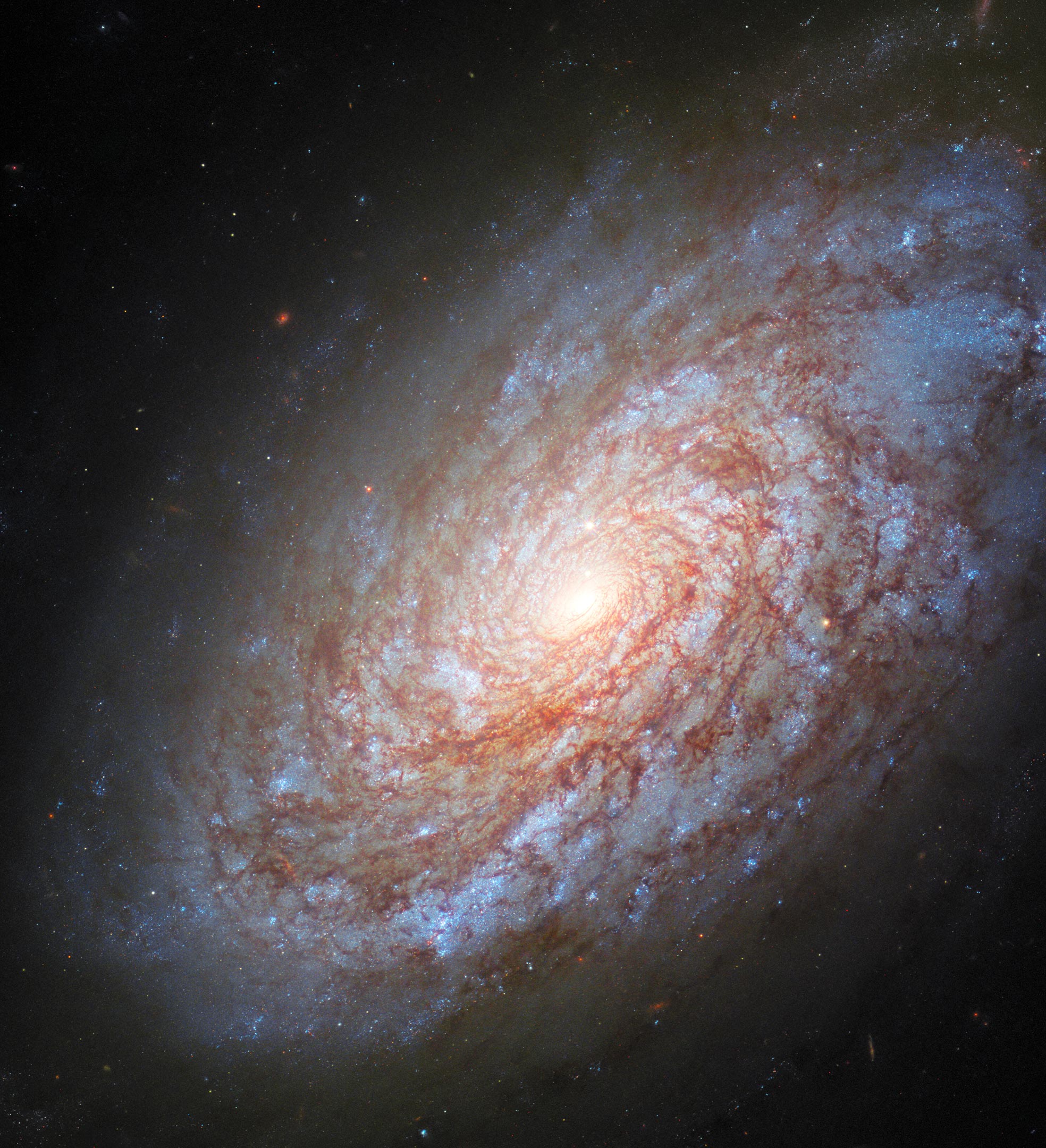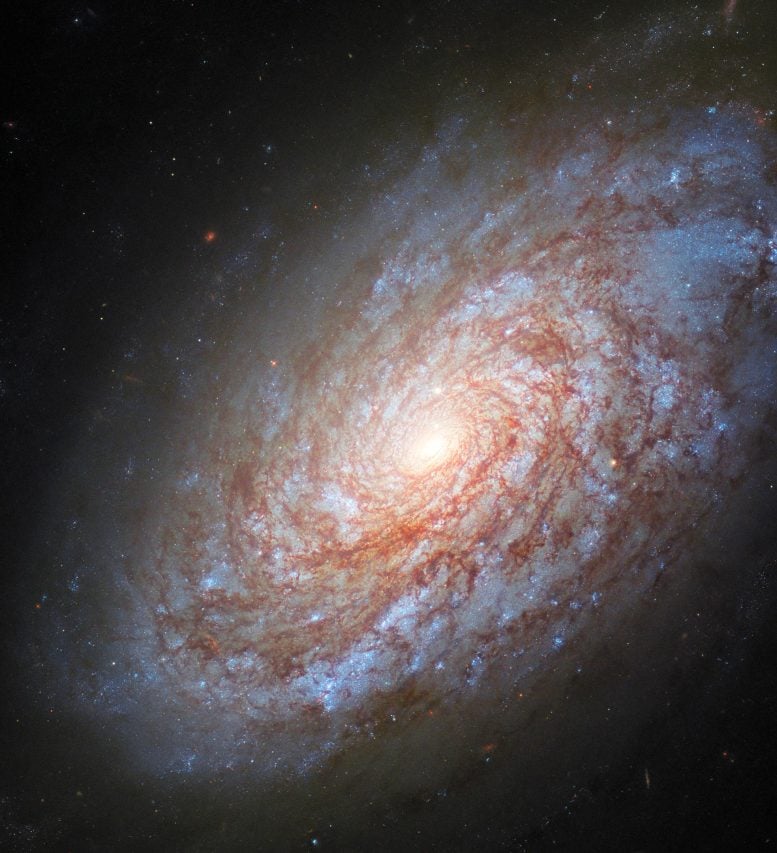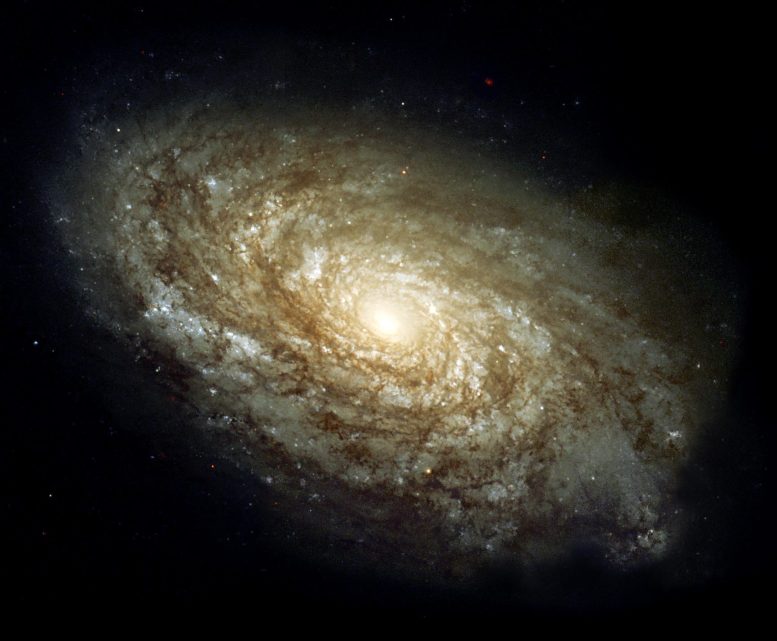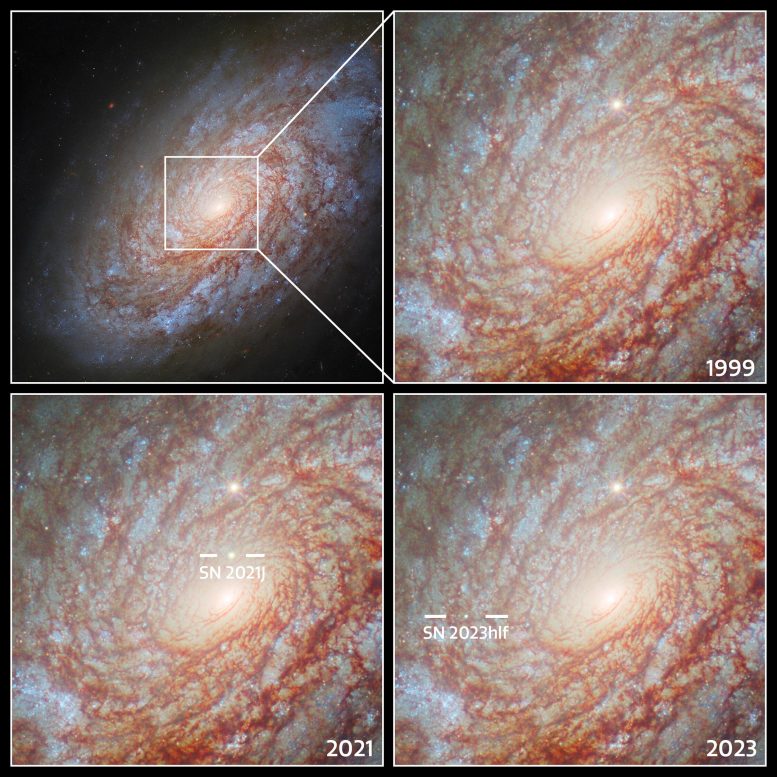

NGC 4414, observed by the Hubble Space Telescope, serves as a cosmic laboratory for studying Cepheid stars, whose predictable light variations help measure the Universe’s vast scale, contributing to our current estimate of its age at 13.7 billion years.
This majestic image from the Hubble Space Telescope shows the unbarred spiral galaxy NGC 4414, located approximately 51 million light-years from Earth in the constellation Coma Berenices.
An earlier image of NGC 4414 (below), featuring Hubble data from 1995 and 1999, captures the galaxy as part of Hubble’s mission to determine distances to far-off galaxies. This mission was part of ongoing research focusing on Cepheid variable stars, which are special stars known for their stable and predictable brightness changes.

The timing of these brightness variations depends on key physical properties, like mass and intrinsic brightness. By studying these changes, astronomers can learn about the stars’ characteristics and, crucially, calculate their distances. For this reason, Cepheids are often called “standard candles” in cosmology.

Astronomers have used Hubble to observe Cepheids, like those that reside in NGC 4414, with extraordinary results. The Cepheids have then been used as stepping-stones to make distance measurements for supernovae, which have, in turn, given a measure for the scale of the Universe. Today we know the age of the Universe to a much higher precision than before Hubble: around 13.7 billion years.